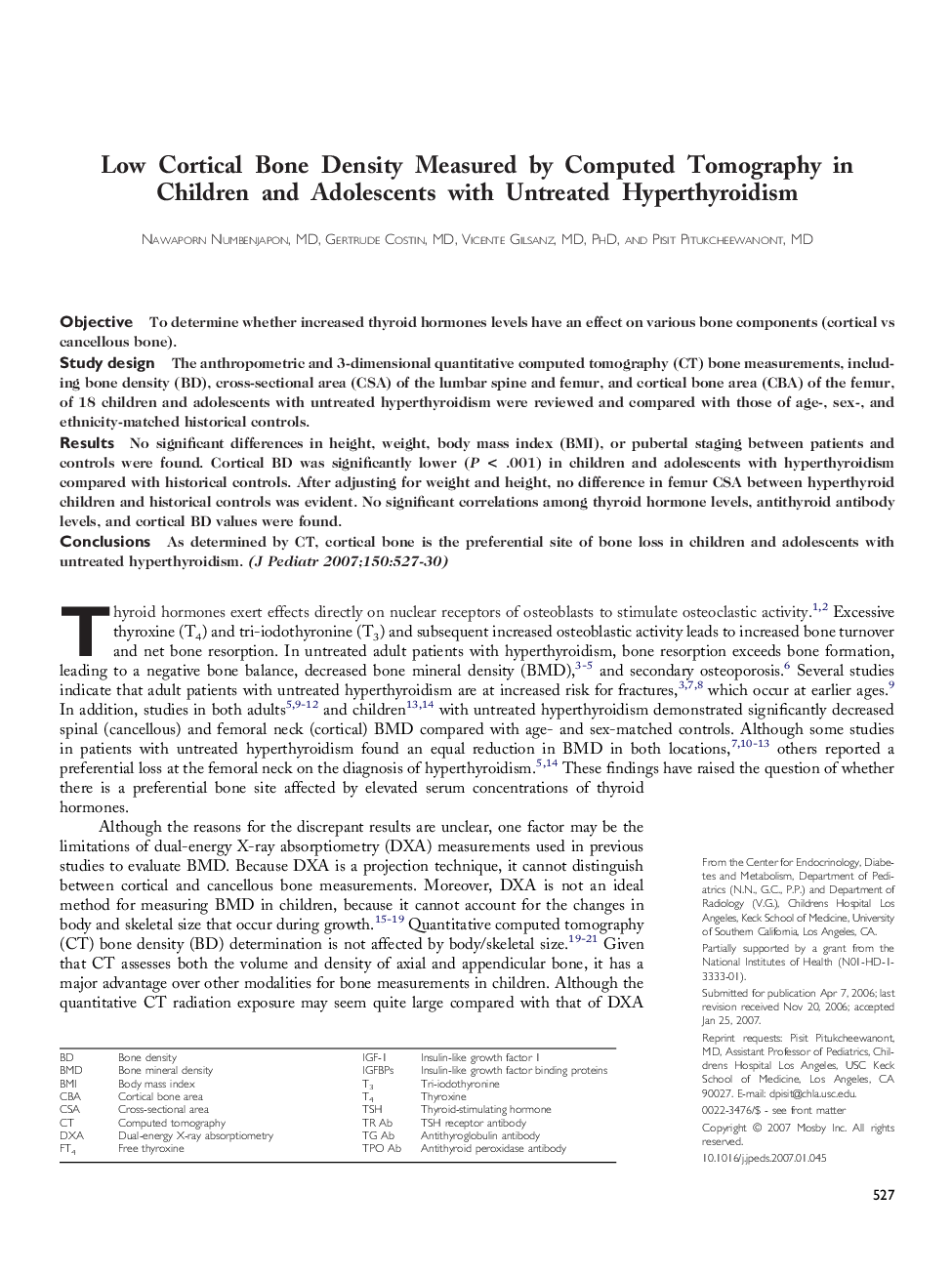| Article ID | Journal | Published Year | Pages | File Type |
|---|---|---|---|---|
| 4168652 | The Journal of Pediatrics | 2007 | 4 Pages |
ObjectiveTo determine whether increased thyroid hormones levels have an effect on various bone components (cortical vs cancellous bone).Study designThe anthropometric and 3-dimensional quantitative computed tomography (CT) bone measurements, including bone density (BD), cross-sectional area (CSA) of the lumbar spine and femur, and cortical bone area (CBA) of the femur, of 18 children and adolescents with untreated hyperthyroidism were reviewed and compared with those of age-, sex-, and ethnicity-matched historical controls.ResultsNo significant differences in height, weight, body mass index (BMI), or pubertal staging between patients and controls were found. Cortical BD was significantly lower (P < .001) in children and adolescents with hyperthyroidism compared with historical controls. After adjusting for weight and height, no difference in femur CSA between hyperthyroid children and historical controls was evident. No significant correlations among thyroid hormone levels, antithyroid antibody levels, and cortical BD values were found.ConclusionsAs determined by CT, cortical bone is the preferential site of bone loss in children and adolescents with untreated hyperthyroidism.
